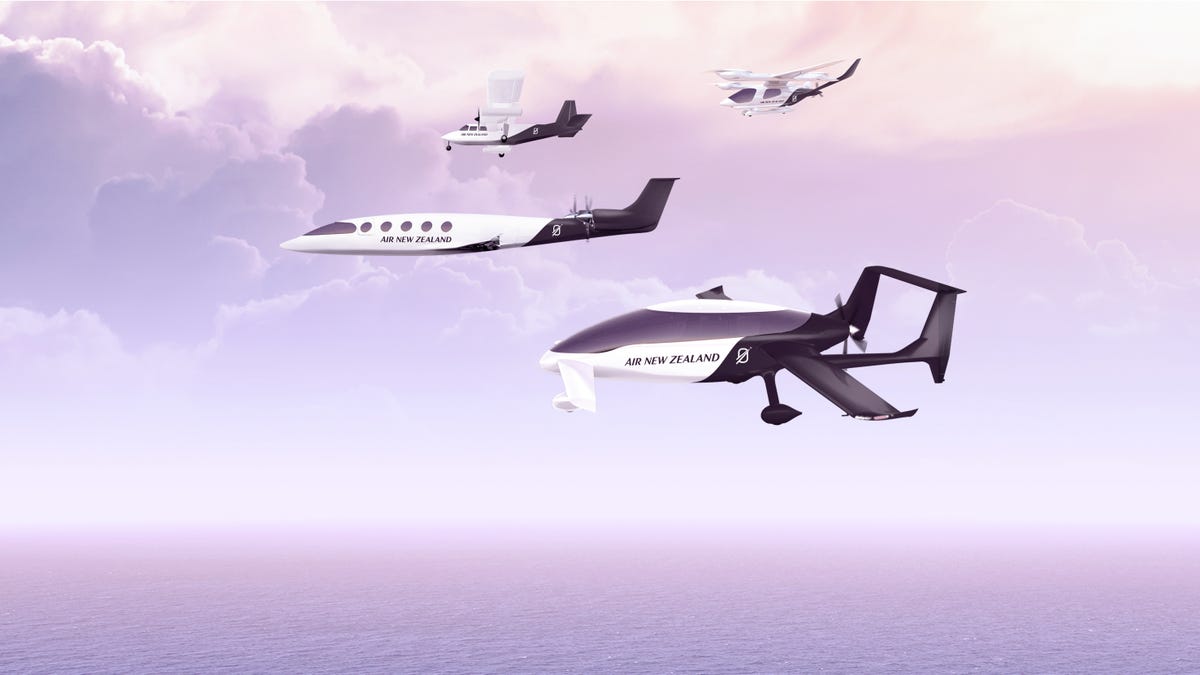Air New Zealand Wants to Fly a Zero Emissions Plane by 2026. Here Are Its Options
The airline has signed an agreement with four aircraft makers to buy three planes from each.

Air New Zealand has four potential partners to make its plans for zero emissions a reality.
Air New Zealand wants to put a zero emissions aircraft in the sky by 2026, and it has a plan for making it happen. On Tuesday, the airline announced partnerships with four companies working on aircraft that could help it meet its target.
Air New Zealand has signed an agreement expressing its intent to order three aircraft from each company at first, with the option to order an additional 20 from one or more of the partners at a later date.
It's no secret that the aviation industry, which is completely dependent on fossil fuels, has a negative impact on the environment by emitting carbon dioxide into the atmosphere, among other factors. With people all over the world suffering the consequences of the climate crisis in the form of more frequent and severe weather events, it's crucial that the industry finds a way to reduce, and ideally eliminate, its greenhouse gas emissions.
Air New Zealand is calling its own effort "Mission NextGen Aircraft," which is part of a long-term strategy to help it decarbonize its entire network before 2050. The airline will work with the partners to develop the technology and infrastructure to ensure the aircraft, which rely on a combination of electric, green hydrogen and hybrid energy, are able to fly within New Zealand in four years.
"Mission NextGen Aircraft is not about backing one innovator," said Air New Zealand CEO Greg Foran in a statement. "It's about working with a range of leaders in zero emissions aircraft technology to help move the whole ecosystem along."
The hope is that at least one of the aircraft will be able to complete a flight by 2026, and then go on to replace the Q300 in the airline's fleet -- a prop plane currently used to make short hops within the country. "Getting a zero emissions aircraft off the ground by 2026 is going to be challenging," said Foran. "But we're incredibly ambitious -- because we need to be."
Meet the aircraft
Eviation Alice
Eviation's Alice.
Eviation, based in Washington state, makes a nine-seater, all-electric commuter aircraft called Alice. Alice is a "flight-proven" plane powered by two electric propulsion units designed for short-range flights.
Beta ALIA-250
Beta's electric aircraft.
Beta's ALIA-250 aircraft is inspired by an Arctic tern, and can take off and land vertically. It comes in cargo and passenger versions, and is able to carry up to five passengers in addition to the pilot.
VoltAero Cassio
The VoltAero Cassio.
VoltAero claims the Cassio 1, its testbed aircraft, is safe, quiet, flexible and efficient in addition to being eco-friendly. The aircraft will be built in France, and its propulsion system relies on a dual source of electric-hybrid energy.
Cranfield Aerospace's Project Fresson
Cranfield Aerospace's converted Britten-Norman Islander nine-seater.
An established aviation business, UK-based Cranfield Aerospace is currently working on "Project Fresson." This is its attempt to transform a fossil fuel-powered Britten-Norman Islander nine-seat aircraft into a green passenger-carrying aircraft using hydrogen fuel cell technology.

